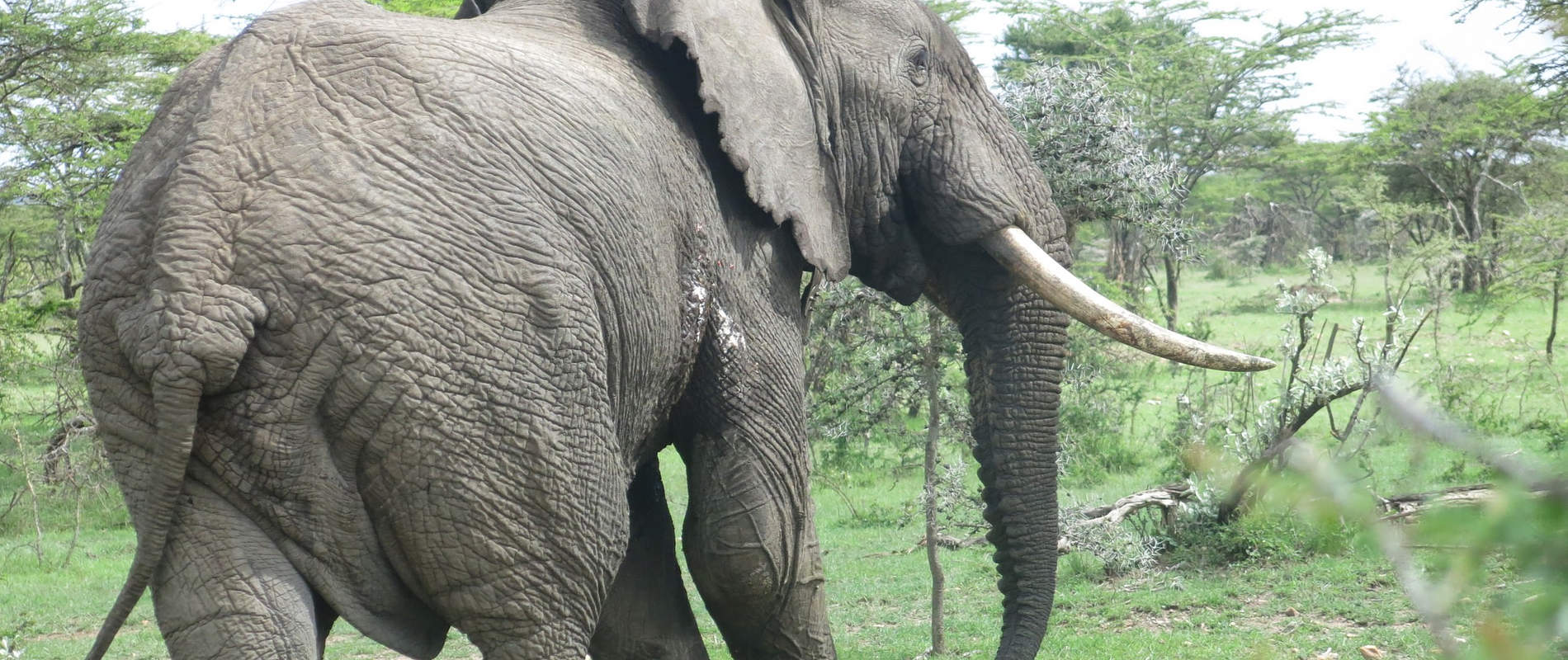Introduction The mobile veterinary team reported back to work towards the middle of the month from their annual leave
Introduction
The mobile veterinary team reported back to work towards the middle of the month from their annual leave. December and part of January was characterised by heavy precipitation which declined towards the end of the month. The entire conservation area is robust with forage and water for wildlife.
The following cases were handled during the period;
CASE 1: INJURED LION CUB
Date: 21st January 2018
Species: African lion
Age: 3-4 months
Sex: Male
Location: Masai Mara National Reserve (Near Talek)
History
This lion cub was seen in the morning by the county security team. He was dragging his hind quarters trying to cross a marshy area. Other members of the pride were nowhere to be seen. They called the mobile veterinary unit for assistance.
Examination
This lion cub was captured manually without sedation and closer examination revealed a deep bite wound to the middle of his spine. This could have been caused by other lions. Severe dyspnea was noted with indications of damage on diaphragm. The posterior half of his body was paralysed with vital physiological functions such as micturition and defaecation hampered.
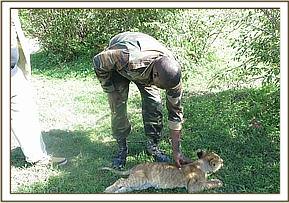

Prognosis
His prognosis was considered grave and it was prudent to prevent him from further suffering. He was sedated with medetomidine and ketamine combination before being euthanized with 20% pentobarbitone sodium administered intracardially. The carcass was then disposed of properly
CASE 2: INJURED LION
Date: 22nd January 2018
Species: African lion
Sex: Male
Age: Adult
Location: Naboisho conservancy
History
This old male of about 14 years was seen injured within Naboisho conservancy by the conservancy rangers. They called the mobile veterinary unit for intervention who found the male lying in a small thicket with fresh injuries on his back.
Immobilization, examination and treatment
Restraint was achieved chemically by use of a combination of 4.8mgs Medetomidine and 200mgs Ketamine hydrochloride. Induction time was eight minutes. After placing him in the shade and in a comfortable position, examination revealed he was involved in a fight with other males. This could have been a territorial conflict. Bite wounds were inflicted to his back but luckily the spinal cord was not damaged and coordination was still good.
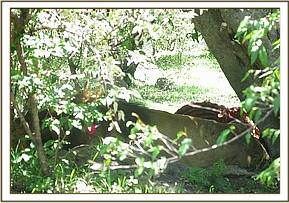

The wounds were debrided with Hydrogen peroxide and rinsed with clean water. Tincture of iodine was applied for disinfection and Cloxacillin antibiotic ointment was infused. Additionally, he received an intramuscular administration of 3000mgs Amoxicillin antibiotic.
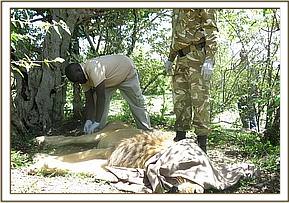

Reversal
Achieved by administration of Yohimbine given intravenously through the saphenous vein one hour after immobilization.
Prognosis
Though this male will recover from the injuries, he will not live for long in the wild due to his advanced age and degradation of his canines. Food acquisition will be a challenge without functional canines.
CASE#3 INJURED ELEPHANT BULL
Date: 27th January 2018
Species: African elephant
Age: Adult
Sex: Male
Location: Siana-Ompopongi Area
History
This collared bull christened Lempiris had been seen with an arrowhead in the right side of his flank by the Elephant Aware Team in Siana. They called the mobile veterinary unit for intervention. The vet unit found the bull browsing with a big herd within Siana/Olarro conservancy. He had a relatively fresh wound to his left flank and appeared elusive.
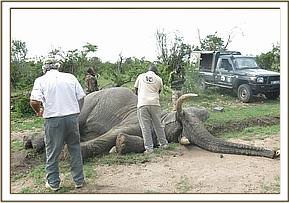

Immobilization, examination and treatment
Immobilization was achieved by use of 17mgs Etorphine hydrochloride delivered through a 3ml dan-inject dart from a vehicle. The drugs took effect after ten minutes with this elephant assuming left lateral recumbency. Examination revealed a fresh wound caused by an arrow. The arrowhead had since fallen out, leaving an open wound. This wound was cleaned with the help of hydrogen peroxide and disinfected with tincture of iodine. Cloxacillin ointment was infused into the wound which was then packed with green clay.
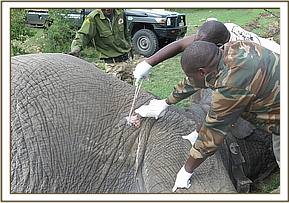

Additional treatments include parenteral administration of long acting Amoxicillin antibiotic and Flunixin meglumine anti-inflammatory.
Reversal
Reversal was achieved by administration of 42mgs Diprenorphine hydrochloride through a prominent ear vein. He woke up in three minutes and joined the rest of the herd.
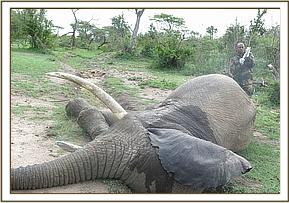

Prognosis
Prognosis is good.
Acknowledgements
The Mobile Veterinary Unit would like to thank all stake holders who provided support during the month. Thanks to Minara foundation through DSWT for their facilitation. Thanks too to KWS management for their technical support.
